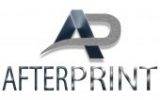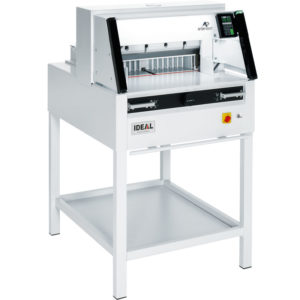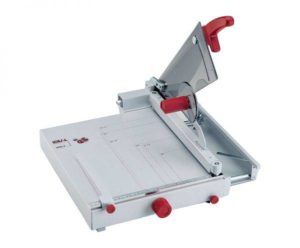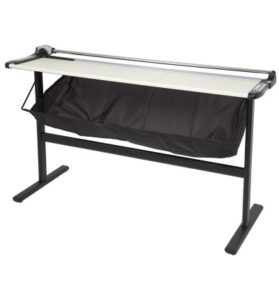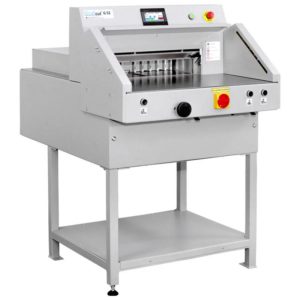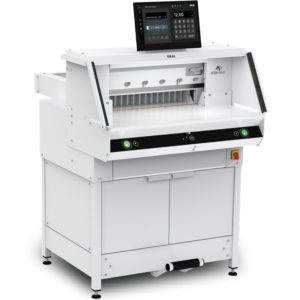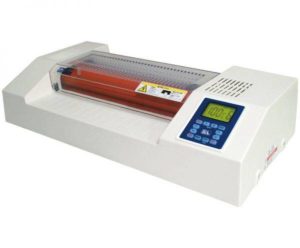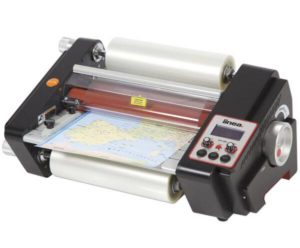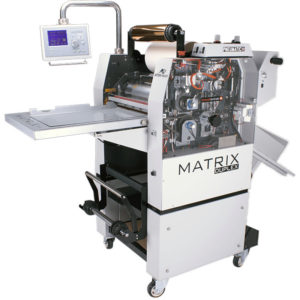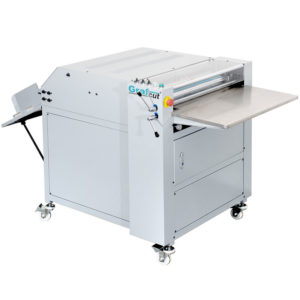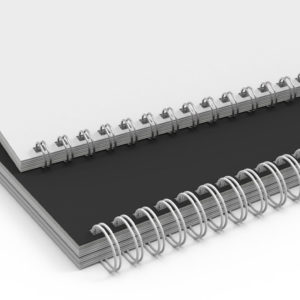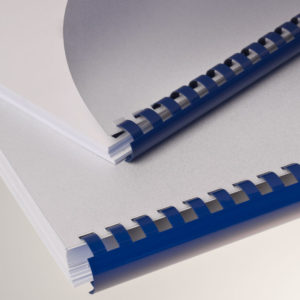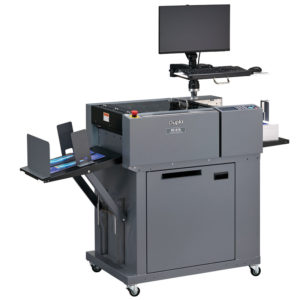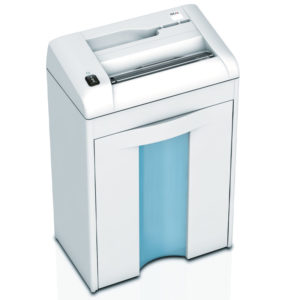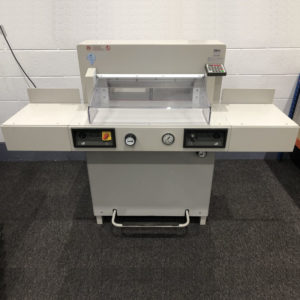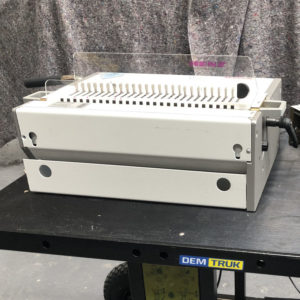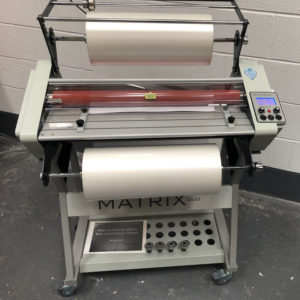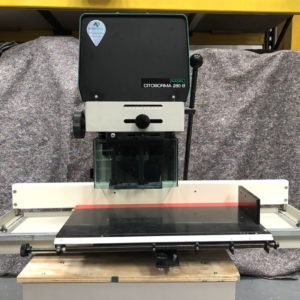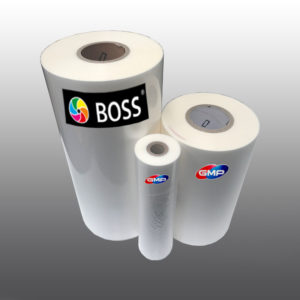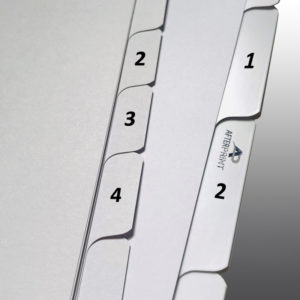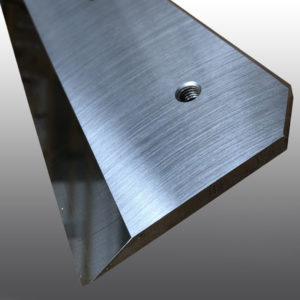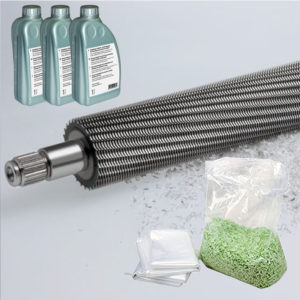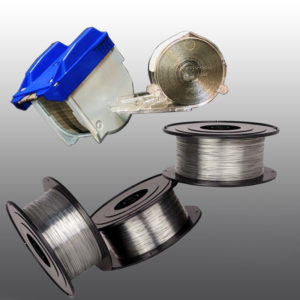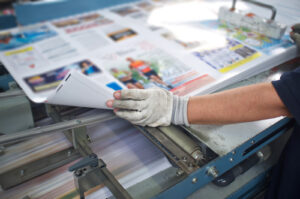28 May 2024
Choosing the Right Paper Laminating Machine for Your Business Needs
Selecting the right paper laminating machine for your business can significantly enhance productivity and ensure high-quality results. With various models available on the market, each offering different features and capabilities, it’s crucial to choose a machine that aligns with your specific needs. This guide will help you navigate the process of selecting the most suitable paper laminating machine by covering essential factors such as lamination speed, size compatibility, and ease of maintenance.
Key Factors to Consider
1. Lamination Speed
Lamination speed is a critical factor, especially for businesses that handle large volumes of documents regularly. The speed of a laminating machine is measured in inches or millimetres per minute, indicating how fast the machine can process documents.
- High-Speed Laminators: Ideal for businesses with high demand, such as print shops or corporate offices that require quick turnaround times. High-speed laminators can process large batches efficiently, ensuring that your operations run smoothly without bottlenecks.
- Standard-Speed Laminators: Suitable for businesses with moderate lamination needs. These machines offer a balance between speed and affordability, making them a practical choice for many small to medium-sized enterprises.
2. Size Compatibility
The size of the documents you intend to laminate is another crucial consideration. Laminating machines come in various sizes, each designed to accommodate different document dimensions.
- Wide-Format Laminators: These machines can handle larger documents such as posters, banners, and wide-format prints. They are essential for businesses involved in advertising, marketing, or any industry that requires large-scale lamination.
- Standard-Format Laminators: These are designed for common document sizes, including A4 and A3. They are suitable for everyday office use, such as laminating reports, presentations, and certificates.
- Specialty Laminators: For businesses that need to laminate unique items like ID cards, business cards, or small labels, specialty laminators offer the precision and functionality required for these tasks.
3. Ease of Maintenance
Maintenance is a key factor that can affect the longevity and performance of your laminating machine. Machines that are easy to maintain can reduce downtime and ensure consistent operation.
- User-Friendly Design: Look for laminators with easy-to-access parts and clear instructions for routine maintenance tasks such as cleaning rollers or replacing film rolls. A user-friendly design can significantly reduce the time and effort needed for upkeep.
- Self-Cleaning Features: Some advanced laminators come with self-cleaning features that help maintain the rollers and internal components, reducing the need for manual cleaning and extending the machine’s lifespan.
- Availability of Spare Parts: Ensure that spare parts and consumables, such as laminating pouches and film rolls, are readily available. This accessibility is crucial for keeping the machine operational and avoiding prolonged downtime.
Additional Considerations
1. Temperature Control
Different materials and laminating films require specific temperature settings for optimal results. A laminating machine with adjustable temperature control allows you to fine-tune the settings to suit various materials, ensuring high-quality lamination without the risk of damage.
- Variable Temperature Settings: Ideal for businesses that laminate a variety of materials, from standard paper to delicate items such as photos or fabric.
- Fixed Temperature Settings: Suitable for businesses that consistently laminate the same type of material, providing a simpler and often more cost-effective solution.
2. Lamination Type
The type of lamination—hot or cold—can affect both the quality of the lamination and the suitability for different materials.
- Hot Lamination: Uses heat to seal the laminating film around the document, providing a durable and long-lasting finish. This method is ideal for most standard documents and is generally faster.
- Cold Lamination: Uses pressure instead of heat, making it suitable for heat-sensitive materials such as photos or certain types of printed graphics. Cold lamination is typically slower but offers protection without the risk of heat damage.
3. Volume and Frequency of Use
Consider how often and how much you will be laminating to choose a machine that can handle your workload without overburdening it.
- Heavy-Duty Laminators: Designed for continuous, high-volume use. These machines are robust and built to withstand constant operation, making them ideal for busy print shops and large offices.
- Light to Medium-Duty Laminators: Suitable for occasional use or smaller volumes. These machines are more affordable and sufficient for businesses with less frequent lamination needs.
Making the Right Choice
Selecting the right paper laminating machine involves balancing your specific business needs with the features and capabilities of available machines. Here are some steps to guide you through the selection process:
- Assess Your Needs: Determine the volume of lamination, the types of documents, and the materials you will be laminating. Consider the frequency of use and the specific features that are most important for your business.
- Research and Compare: Explore different models and brands, comparing their specifications, capabilities, and reviews. Pay attention to the machine’s speed, size compatibility, ease of maintenance, and additional features such as temperature control and lamination type.
- Consult with Experts: If you’re unsure which machine is best suited for your needs, consult with suppliers or experts in the field. They can provide valuable insights and recommendations based on your specific requirements.
- Test Before You Buy: If possible, test different laminating machines to see how they perform with your typical workload and materials. This hands-on experience can help you make an informed decision.
Conclusion
Choosing the right paper laminating machine is crucial for enhancing efficiency and productivity in your business operations. By considering factors such as lamination speed, size compatibility, and ease of maintenance, you can select a machine that meets your specific needs and supports your workflow.
For a wide range of high-quality paper laminating machines tailored to various business requirements, visit AfterPrint. Our expert team is ready to assist you in finding the perfect laminating solution to streamline your operations and ensure top-notch results.

